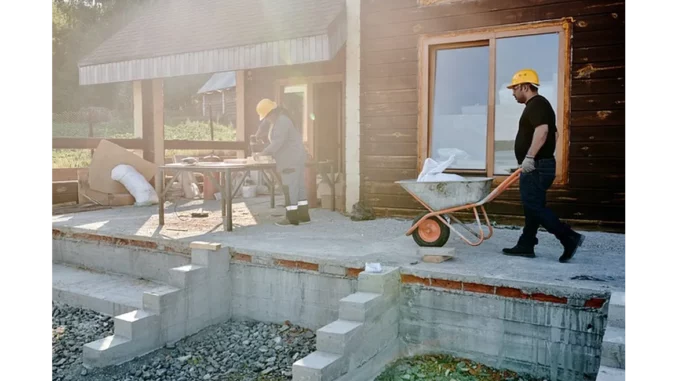
When I sat down with Michael, a seasoned Retrofit Assessor with over a decade of experience in the field, I was eager to get his take on the new Retrofit Assessor Standard, BSI 40104. The consultation seeks views and feedback on this new standard, which aims to provide a standardised framework for the method of retrofit assessment. Michael had recently attended a seminar that broke down the key changes and insights from the new standard.
Focus360 Energy: property compliance services – pre-planning to post-construction. Learn more.
“Emily, it’s a mixed bag,” he began with a wry smile, as we settled into a quiet corner of a local café. “On one hand, it’s a massive leap towards ensuring consistency and quality in retrofit assessments. But on the other, it’s undeniably going to complicate things for us on the ground.”
Michael’s primary concern revolves around the expanded toolkit for on-site assessments, as specified in section 4.2 of the standard. “We’ve always used basic tools like moisture meters, but now, we’re expected to carry around a hygrometer and a vane anemometer with a hood,” he said, shaking his head slightly. “While I understand the necessity for thorough assessments, this expansion is going to impact the time and logistics significantly.”
The new standard also introduces several areas that assessors need to be particularly mindful of. For instance, section 5.1.1 highlights the need to identify any health and safety concerns during site visits as well as potential constraints that might affect retrofit design choices. “This is a welcome addition,” Michael admitted. “Safety should always be paramount, and considering potential constraints helps in creating more realistic and effective retrofit plans.”
Another critical update is the consideration of future climate change-related hazards, including overheating, flooding, and subsidence. Michael found this to be both progressive and essential. “Predicting future risks is crucial. It’s not just about making homes more energy-efficient today but ensuring they remain safe and habitable in the future.”
One of the more contentious updates is detailed in section 6.3 – the Occupancy Assessment. Unlike the previous PAS 2035, which offered a basic option, the new standard requires a comprehensive assessment of the homeowner’s or tenant’s satisfaction and wellbeing. Michael seemed conflicted about this change. “On one hand, it’s excellent that we’re looking at the occupant’s wellbeing. After all, they are the ones who will live with the retrofit. But this will undoubtedly increase the time and cost of each assessment.”
Michael also touched on the historical insight section (5.1.3), which necessitates a review of the property’s past use. “This might seem overly meticulous, but it’s crucial for identifying any past activities that might require decontamination or special handling,” he explained. “For instance, a former industrial site turned residential could have hidden hazards that need addressing.”
The new standard’s focus on ground conditions and topography, as outlined in section 5.1.4, also caught Michael’s attention. “Understanding ground conditions is vital for planning any retrofit work. If the ground is unstable or access is limited, it can significantly impact the project’s feasibility.”
Local factors, exposure, and shelter are also part of the new assessment framework (5.1.5). “This is about understanding the environmental context of the property,” Michael noted. “For example, a property exposed to high winds might need different retrofitting solutions compared to one sheltered by other buildings.”
The standard also includes an extensive ventilation assessment (6.2.1). “Proper ventilation is often overlooked but is a key component of any retrofit. Poor ventilation can lead to issues like mould and damp, which negate the benefits of energy efficiency measures.”
Beyond these updates, the standard also introduces several annexes that provide additional guidelines and frameworks. Annex A focuses on condition factors to consider, while Annex B provides detailed sample collection sheets. Annex C outlines the competence framework, which might require assessors to undergo upskill training in areas like ventilation testing and ground conditions. Lastly, Annex D offers guidance on CPD management for assessors.
Michael concluded our chat with a thoughtful pause. “All these changes are undoubtedly aimed at improving the quality and consistency of retrofit assessments. However, they also bring about significant challenges in terms of time, cost, and training. The public consultation is a great opportunity for us to voice these concerns and hopefully find a balance that works for everyone.”
As I left the café, I couldn’t help but reflect on the intricate balance between progress and practicality. The new Retrofit Assessor Standard, BSI 40104, indeed appears to be a step in the right direction, but whether it goes too far remains to be seen. The public consultation will undoubtedly provide valuable insights and feedback to shape the final standard, ensuring it benefits both the industry and consumers alike.
Emily Thompson


Be the first to comment